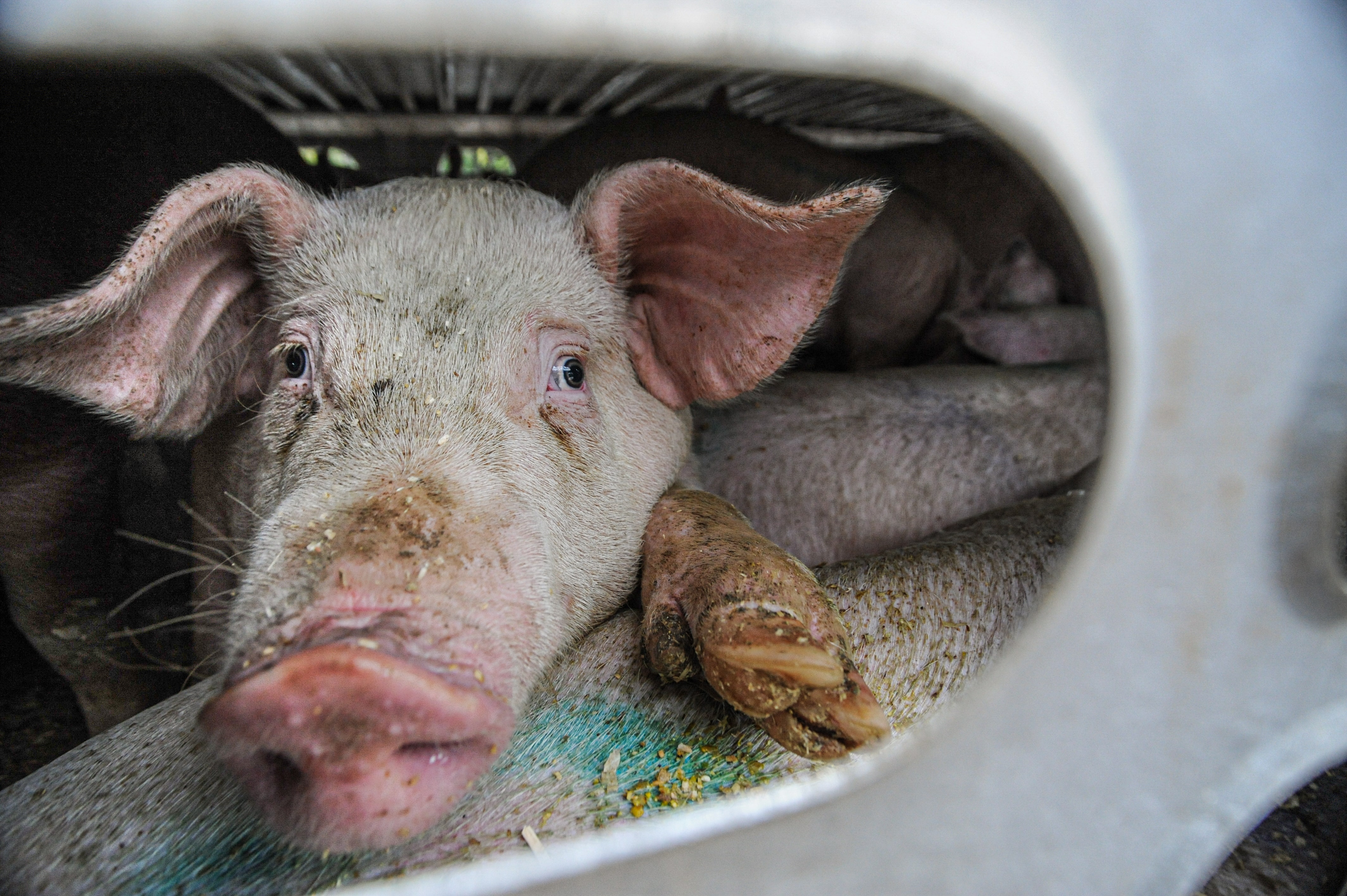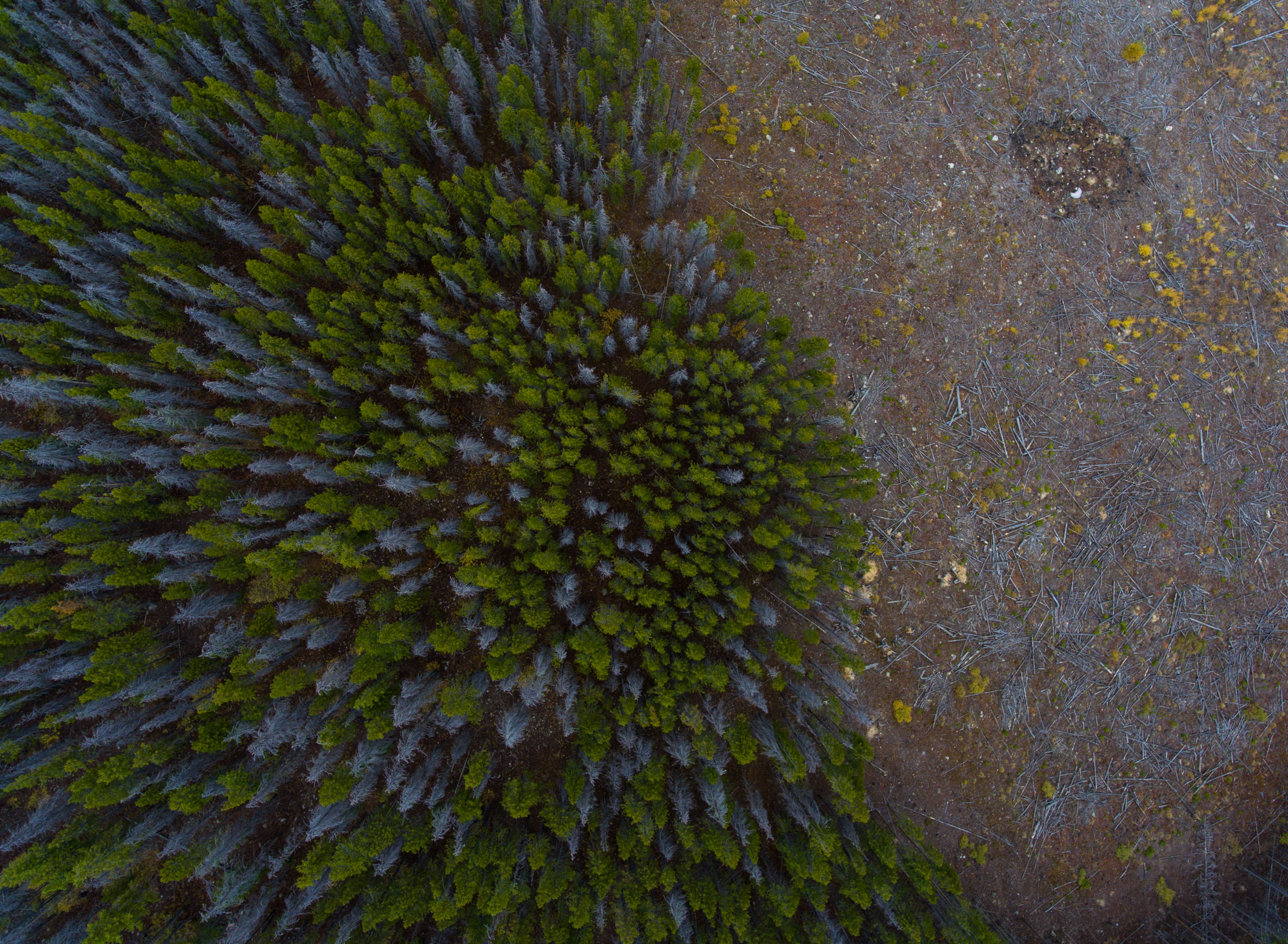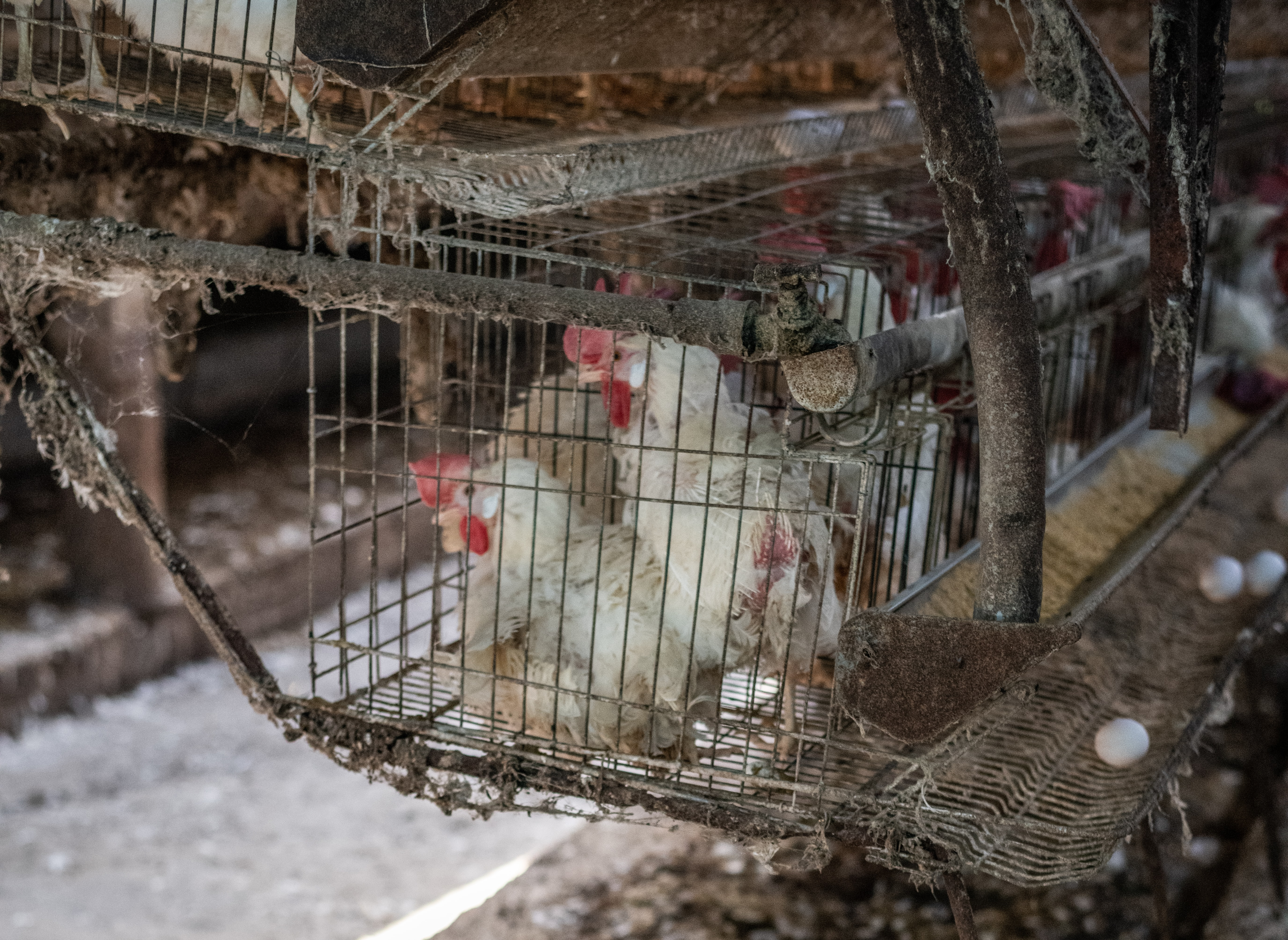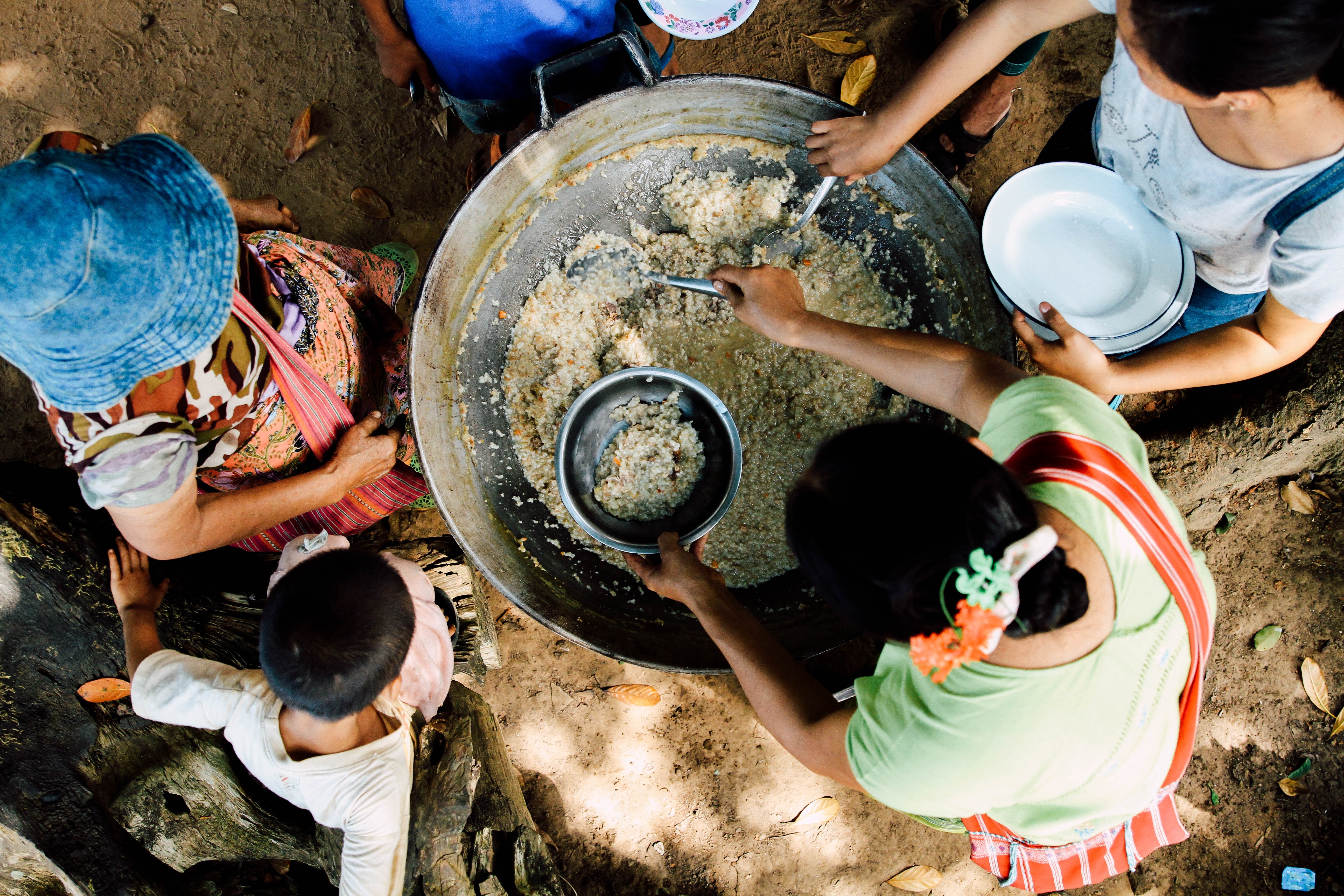
Sometime in October 2020, I did something I thought I could never do: I became a vegan.
As an environmental writer, I’m constantly hearing about the impact of meat and other animal products on the planet. For years I tried to turn a blind eye, thinking that being veggie, let alone a vegan, in a house of omnivores would make mealtimes far too complicated. Then Mr Rixon said that he would happily go without meat at home and so, a few years ago, I resumed the vegetarianism of my youth.
My conscience felt much clearer, but I couldn’t shift a nagging suspicion that this was not quite enough. I avoided researching the dairy and egg industries, fearing that denying myself these foods would make for a miserable existence. Mr Rixon and I are big tea drinkers – surely our frazzled brains could simply not cope if they had to remember to pour different milks into our mugs four or five times a day? But when Mr Rixon discovered that cow’s milk disagreed with him he decided to switch to plant-based alternatives. I used this as an opportunity to give veganism a try.
Here are the reasons why I did it:
The environment

According to the Food and Agricultural Organization (FAO) of the United Nations, livestock accounts for 14.5 percent of all human-related greenhouse gas emissions (GHG) every year – equivalent to the whole world’s transport sector. This is due to the carbon dioxide that is released when forests are destroyed for both animal feed production and livestock grazing, as well as all the methane produced by the world’s 70 billion agricultural animals when they digest their food. Manure left on pasture also emits nitrous oxide, which has a much stronger global warming impact per ton than CO2.
Livestock is the world’s largest user of land resources, taking into consideration both grazing land and the vast monocultures of cash crops used to feed animals. FAO estimates that around 70 percent of the Amazon rainforest has been cut and burned to make way for cattle grazing land alone. It therefore comes as no surprise that animal agriculture is the primary driver of biodiversity loss and wildlife extinction.
Farming animals is incredibly thirsty work. 70 to 90 percent of the world’s freshwater supply goes to agriculture – a third of which is used on livestock. This could be a terrible waste of precious resources if climate change causes reservoirs around the world to dry up. It is also one of the biggest causes of water pollution. Every year, millions of gallons of nutrient-rich slurry runs off into our waterways, damaging ecosystems, threatening aquatic life and posing a risk to human health. Then there’s the pesticides used on crops used to feed animals and the medicines and antibiotics used to treat them – all of which end up in the water supply.
Unfortunately, eating fish isn’t any better for the environment. Most of the fish consumed today comes from aquafarms, which pollute oceans and threaten wild fish populations through pesticides, antibiotics, parasites and faeces. Oceans play a major role in regulating the Earth’s temperature and helping to mitigate the effects of climate change, but this role is severely compromised by industrial-scale fishing. Industrial fishing also devastates delicate marine habitats through practices such as bottom-trawling, which Greenpeace says is currently carried out in 98 percent of the UK’s marine protected areas.
Leading a plant-based diet has been shown to have a considerably lower environmental impact. A 2018 American study found that a Beyond Meat vegan burger required 46 percent less energy, used 99 percent less water and 93 percent less land, and generated 90 percent less GHG emissions, compared with a typical quarter pound of U.S. beef.
Last year, researchers at Oxford University estimated that cutting out meat and dairy could reduce an individual’s carbon footprint from food by three quarters, while an in-depth report by the EAT-Lancet Commission concluded that even the most sustainable meat resulted in more GHG emissions that plant-based alternatives.
All these things considered, it is clear to me that farming animals (whether it’s for meat, fish, eggs or dairy products) is the just about the worse thing we are doing to our planet, while adopting a vegan diet is the single biggest thing an individual can do to help it.
Animal welfare

The Five Freedoms of Animal Welfare is a widely adopted set of principles for assuring that animals are well kept. It states that animals should be free from hunger, thirst, and malnutrition; pain, injury and disease; discomfort; and fear and distress, and that they should be free to express their natural behaviour. When animals are farmed for food – even on organic farms with high welfare standards – it is difficult to see how all these freedoms could ever be met.
It is thought that cows could live for well over 20 years, but on dairy farms they are shot at six to seven years of age when they are considered ‘spent’, while beef cows are killed much earlier. Dairy cows are continuously artificially impregnated and milked throughout their short lives. They have been bred to produce unnaturally high milk yields, and often suffer from painful mastitis as a result. In addition, cows typically spend around half the year indoors, which can lead to lameness.
Dairy cows are separated from their calves soon after birth, causing distress to both mother and calf. According to the RSPCA, bull calves are either shot at birth or reared for the veal market. In the UK, veal calves are at least reared in open-sided barns in small groups, but many are exported live on lorries for up to 19 hours to mainland Europe, where they are kept alone in closed barns, often without any bedding.
Meanwhile on chicken farms, broiler chicks are dispatched at just five to eight weeks, while egg laying hens are slaughtered at around one year of age. Male chicks on egg farms are killed shortly after hatching. Some breeds of chicken, including those supplied to major supermarkets such as Tesco, Sainsbury’s and Aldi, have been bred to grow so rapidly that they cannot support their own body weight, suffering skin diseases, heart problems, lameness and terrible pain as a consequence.
We tend to think of free range hens roaming about the countryside, but in reality they are packed into vast open-sided barns, with nine birds crammed into one square metre of floor space. According to the Vegan Society, it is standard practice on free range chicken farms to sever the tips of hen’s beaks with a hot blade without pain relief to stop the stressed animals from pecking each other to death. Battery chicken farms are now banned in the UK and EU. But the new ‘enriched’ cages are scarcely better, with chickens crammed into cages the size of an A4 piece of paper, unable to carry out natural behaviours, such as dust-bathing, perching and grooming.
Most of the world’s pigs spend their lives indoors, in overcrowded sheds, unable to forage and root, before they are slaughtered at around five to six months of age. Inhumane pig farming practices such as tooth clipping, tail docking (without pain relief) and keeping sows in sow stalls in which they cannot even turn round have been banned in the UK, but undercover investigations by the likes of Animal Equality and EcoHustler have found that they are still widely practised. I find the idea of pig farming particularly distressing because pigs are among the most intelligent species on Earth, and have been found to show empathy, dance with joy and wag their tails like dogs.
At sea, the fishing industry causes a great dealing of suffering to marine creatures. Masses of whales, seals, turtles and seabirds are killed and injured every year by long-line fishing rods and discarded fishing nets.
World hunger and health

According to FAO, 690 million people do not get enough to eat each day – a figure that is expected to exceed 840 million by 2030. But research suggests that if more of us followed a vegan diet, it could help to tackle the problem of world hunger and malnutrition. 83 percent of the world’s agricultural land is dedicated to animals, despite the fact that animal products only account for 18 percent of calories consumed worldwide. However, a study at the University of Minnesota found that if humans consumed all the crops intended for livestock, there would be enough food left over to feed an additional four billion people.
Eating meat and dairy has also been linked with two of the biggest health challenges facing humankind today: antibiotic resistance and pandemics. It is a concern that overusing antibiotics in farmed animals, together with contamination of the water supply with antibiotics, may contribute to the growing problem of antibiotic resistance in humans.
Classified as a zoonotic disease, Covid-19 is thought to have originated in the live slaughterhouses of China. Recently, experts from the UN and the European Food Safety Authority have warned that the conditions on factory farms are similarly conducive to the emergence of zoonotic infections, potentially leading to future pandemics.
It is a common misconception that plant-based diets cannot meet all our nutritional requirements, but the British Dietetic Association states that a well-planned vegan diet can support healthy living in people of all ages, including children and pregnant women. And if dietitians say that it’s possible to be healthy and vegan then that’s good enough for me. In fact, vegan and vegetarian diets have been linked with a lower risk of heart disease.
My choices

I don’t expect everyone reading this to go vegan or even vegetarian; I respect your food choices as I hope you will respect mine! We are all doing what we can to make the world a better place. I’m far from perfect and still have a long way to go to reduce single use plastic and other forms of waste.
I also understand that many people may find it more challenging than I have done to change their diets. I do most of my shopping online and simply have to include the word ‘vegan’ in the search box to be presented with a long list of vegan options for every type of foodstuff imaginable. That said, if I inspire anyone to cut down on meat, choose better quality meat or perhaps even have a vegan day each week, then I will be happy.
This year, a record-breaking 500,000 people signed up to take part in the 31-day Veganuary challenge. While I’ve never done Veganuary, knowing that it was OK to try being vegan for a month before committing to a long-term vegan diet certainly gave me the confidence to give veganism a go.
Statistics released this month by Finder.com showed that the number of vegans in the UK rose by 445,428 over the last 12 months and now equates to over two percent of Britons. I am proud to be one of them.
In early December 2020, I spent a morning planting trees – in accordance with Covid-19 safety guidelines – with the Hackney Tree Musketeers. By the end of the day we had planted ten new trees. It was great fun but exhausting. How wonderful to think that I am saving thousands of trees by doing nothing other than eating delicious food each day!
As for Mr Rixon, he’s joined over three million other Britons and become a full-time vegetarian. And in case you were wondering, we now enjoy our numerous daily cups of tea with oatmilk. Not only is it delicious and nutritious but, like other plant-based milks, it comes in tetrapacks, which just so happen to be great for growing baby trees! Win-win.
(Featured image credit: Annie Spratt, Unsplash)


As a vegetarian, I can only like your post. Thank you.
Joanna
LikeLiked by 2 people
Thanks as always, Joanna.
LikeLike
Well, Charlotte, you will be glad to hear that some years ago when my wife found she had an intolerance to dairy products she changed easily to Soya milk on breakfast cereals or fruit. Since our daughters no longer lived at home I felt there was no point in buying Soya as well as dairy milk. So, Soya it was for both of us and we actually drink our tea without milk! Dairy intolerance did not stop my wife eating a little cheese but from that time we have changed our eating routines. Sunday is traditional, both of us would miss a Sunday roast but come Monday it is vegetables only, Tuesday is fish, Wednesday meat and so it goes around alternating and it seems to work for us. Red meat once-twice in a month. More recently though, we are eating many more vegetables and loving it! Fruit is always better as a dessert but unfortunately, my mother belonged to that generation who baked all the time and I do love puddings. For me now, puddings are a treat once or twice a month. I don’t think it would take much for either of us to become vegetarians; one of my daughters is already!
Odd, but this morning I received an email from a society I belong to in Scotland
https://www.onekind.scot/
where I’m in their book club and one of the titles I ticked to read before our next video meeting in March is ‘Eating Animals’ by Jonathan Safran Foer.
Charlotte, your posts here are always thought-provoking and enjoyable. 🙏😘🙏
LikeLiked by 1 person
Thank you for reading, Ashley. I’ve found the switch to different sorts of milk easy too. I’m also a fan of puddings, but we try to limit them. Thankfully, this is definitely one area that I’m not missing out as it’s easy to make puddings and cakes vegan with simple substitutions, such as oil for butter and flaxseed and water instead of eggs.
I’ll put Eating Animals on my reading list; it sounds intriguing!
LikeLike
Well done Charlotte, I enjoyed reading this and you have clearly done a lot of research.
If I was being pedantic though I would say that I don’t think it’s true that fish is just as harmful as beef. Whilst I agree that fishing is harmful, it’s nowhere near as bad as the beef industry at least in terms of carbon footprint. In fact just by cutting out beef people could dramatically cut their food carbon footprint even if they carry on eating other meats and fish. I don’t have the figures to hand but could check. Of course it’s true that on average a vegan diet has the lowest carbon footprint.
As you know I’ve been vegetarian for nearly 30 years now and am pretty sure I will never eat meat or fish again anyway.
Am also doing Veganuary but probably won’t stay vegan after the end of the challenge. I had already swapped to oat milk for my cereal a few months ago (I don’t drink tea or coffee) and trying to cut down on dairy but will still have cheese and eggs now and again.
LikeLiked by 2 people
Hello Sarah, thanks so much for reading and for your kind words.
There’s nothing wrong with being pedantic! I didn’t mean to imply that fish had exactly the same carbon footprint as beef, just that most of the information in the media about farming, veganism and the environment tends to focus on land animals and overlooks fishing. I see now that I should have written something like ‘unfortunately, eating fish is not without its environmental impact’. I’m sorry that this wasn’t clear. Your words have got me thinking though that fishing may turn out to have a more detrimental effect on the environment that we realise. I’m not a scientist but I’ve heard it said that the ocean is a carbon sink and that drastically reducing its biomass through overfishing and destroying marine habitats may be contributing towards climate change but obviously some forms of fishing are much more sustainable than others. I clearly need to do more research here.
As a vegetarian of 30 years you’ve got a much better track record than me! I was a vegetarian for about eight years before lapsing for 10 (although I never ate much meat). Well done for doing Veganuary. It’s definitely true that you can make a big difference by cutting down on dairy and eggs. You don’t need to go the whole hog (if you’ll pardon the expression) and go vegan. It just feels like the right choice for me personally.
LikeLike
I found your article very wide ranging, Charlotte – food for thought indeed! I myself gave up milk a while ago for health reasons and have been happy with Alpro soya ever since (hoping the soya didn’t come from Brazil). We have as a family always enjoyed vegetarian food but now more than ever I’m delving into my old Sarah Brown ‘Vegetarian Kitchen’ recipe book for inspiration – many of the recipes would be termed vegan nowadays – or can be tweaked. There is so much more choice in the shops now for ready made vegetarian and vegan food. There was also a really informative article on vegan “fish” in a Sunday paper last week. Animal welfare is high on my agenda and I have always found the transport of live animals abroad totally abhorrent . I hope it stops.
LikeLiked by 1 person
Thanks for reading, Ruth. That’s an interesting point about soya and Brazil. Huge swathes of the Amazon rainforest have been destroyed to grow soya beans. However, according to Greenpeace, only 6 percent of the world’s soya is consumed by humans. The vast majority is turned into animal feed for agricultural animals. As a vegan, I do eat some soya products such as tofu and soya yoghurt. And if more people followed a vegan or plant-based diet that would inevitably lead to more people eating soya, but it would result in less soya being grown overall.
Many thanks for putting me onto that vegan fish article! I’m very excited to hear that there is a convincing vegan alternative to tuna. I’ve not eaten real tuna for a long time, ever since I heard that tuna fishing endangers albatrosses, but it’s one thing that I do miss.
I remember the Sarah Brown Vegetarian Kitchen recipe book! I used it a lot when I was a student.
LikeLike
Hi Charlotte, about fish! With so much plastic being dumped in the sea and with it degrading into ever smaller pieces, I understand that some plastic is already into the food chain. As more plastic degrades into microscopic particles I wonder how this will affect health in the future, in particular todays children and their children?
LikeLiked by 1 person
That’s a good point, Ashley! Only time will tell whether consuming microplastics in fish is doing us any harm. I believe that one of the biggest causes of plastic pollution at sea is discarded fishing nets, so that’s one more reason for me to avoid fish. I’ve heard that using something called a guppy bag in your washing machine can reduce the amount of plastic microfibres that make their way into the waterways – that’s one more thing for me to investigate.
LikeLike
Thank you for sharing this info. I became a vegan last March more for the health benefits of a plant based lifestyle. I knew meat production wasn’t good for the environment but hadn’t researched. Your post was very thorough. Thanks!
LikeLiked by 1 person
Thank you for reading! It’s lovely to meet a fellow vegan member of the FI community. I definitely feel a lot healthier for switching to a plant-based diet, though there are plenty of vegan versions of ‘unhealthy’ foods such as cheese, chocolate and cake out there to tempt me!
LikeLiked by 1 person
Agreed. I try to keep it clean but once in a while I harm myself by eating some kind of vegan processed “healthy treat”
LikeLiked by 1 person
Pingback: Moving on, again – Little Wild Tales